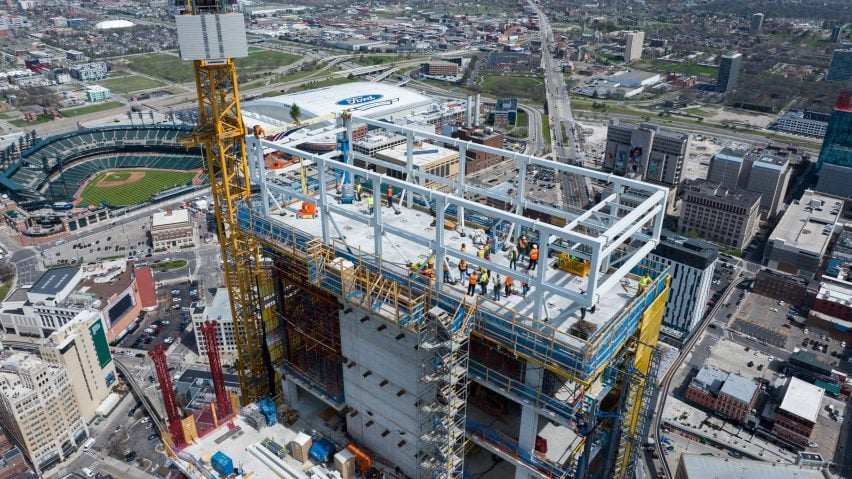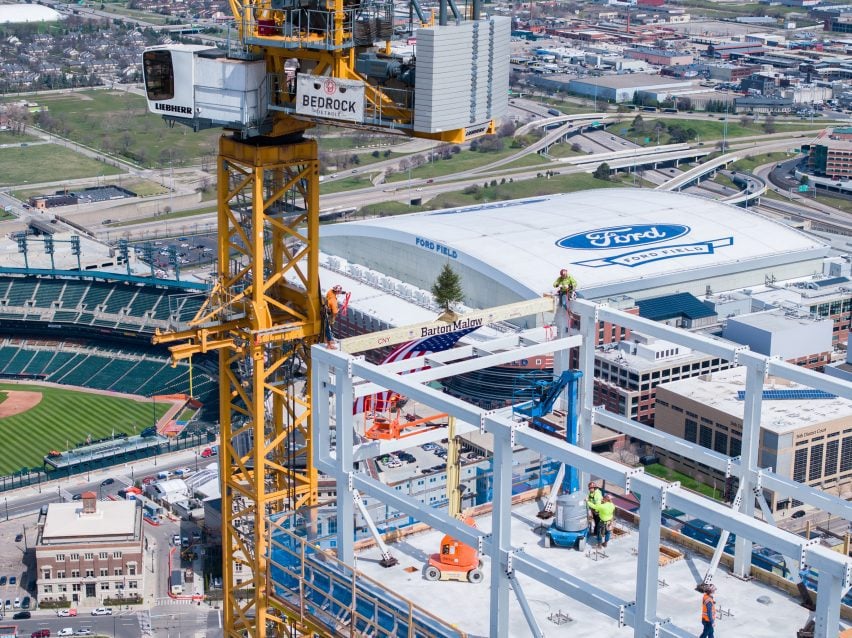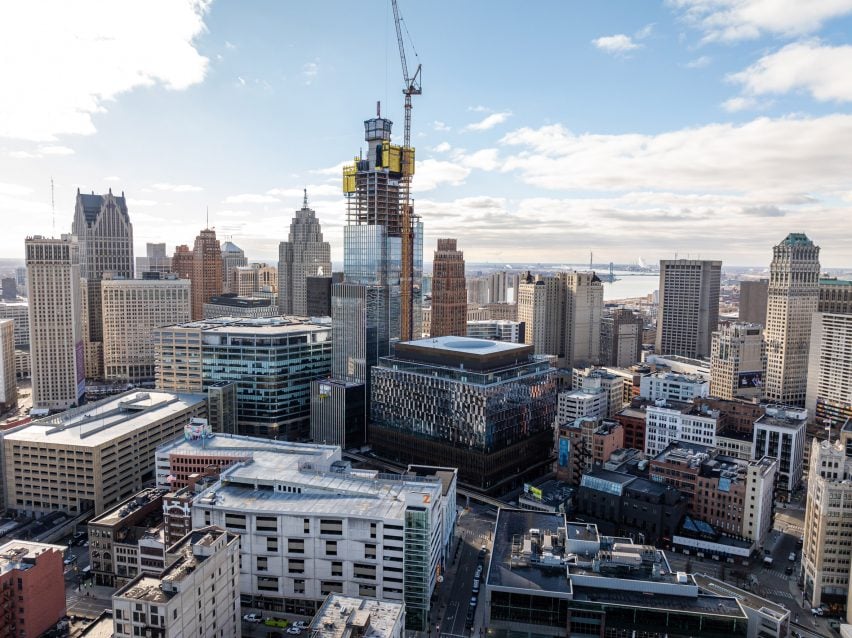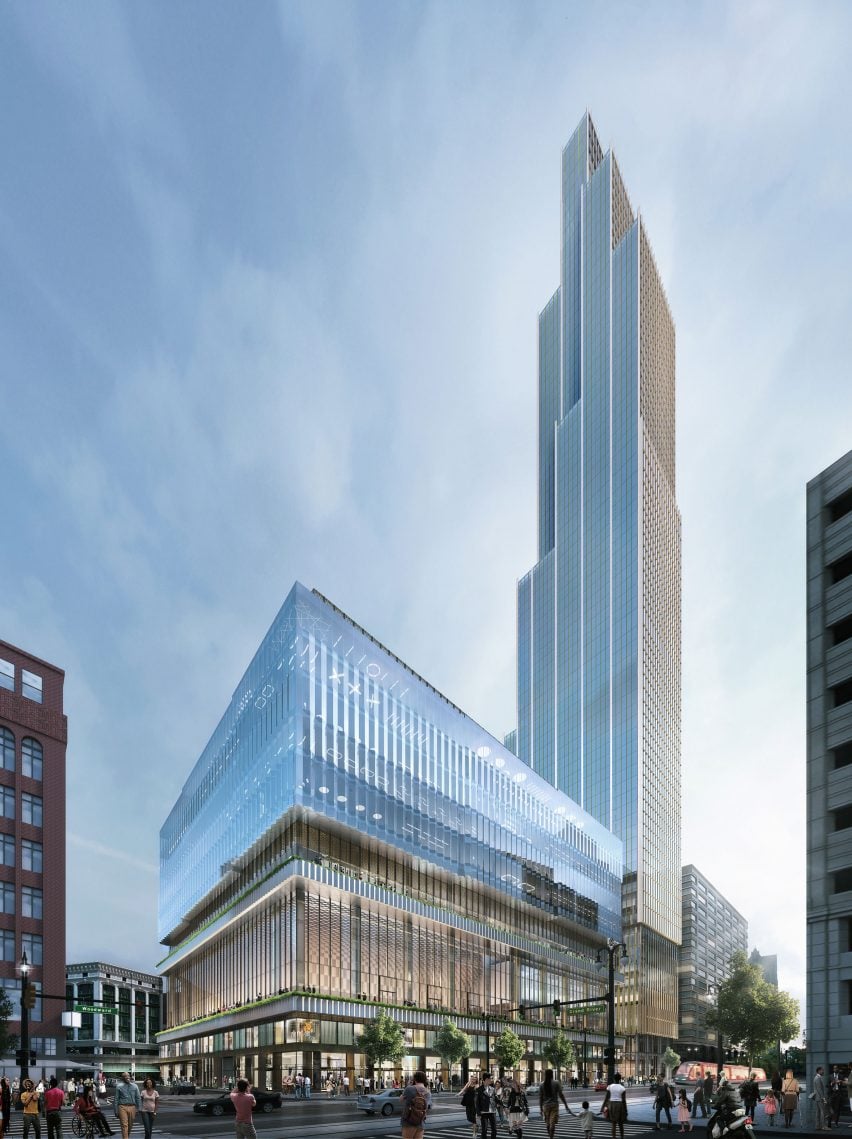
Detroit skyscraper becomes city's second-tallest building
A skyscraper designed by New York studio SHoP Architects at Detroit's Hudson's Detroit development has topped out, making it the second tallest building in the city.
Named the Tower, the 685-foot-high (207 metre) skyscraper forms part of a larger development in Downtown Detroit called Hudson's Detroit. It reached its full height this week.
When complete it will have a form of thin, flat volumes pushed together that step up in height pyramidally as it rises on the front, with a unified facade of glass fronted by vertical terracotta fins.
It will hold residences and a hotel, with the adjacent building holding retail and offices.

Construction commenced on the site in 2017, under a different design by SHoP Architects with a chimney-stack design. New renderings were released just a year later with a proposed height of more than 900 feet (274 metres), much more than the final height.
It is part of the Hudson's Detroit development in the city, funded by local developers Bedrock. It also includes a boxy, 14-storey volume, connected to the skyscraper through an underground parking garage.
"A critical step in the design of the tower was to separate it from the balance of the Hudson's Detroit programming, a move that allows people to access and experience all sides of the building and that also makes its slender form more apparent," SHoP Architects principal Bill Sharples told Dezeen.
"This decision also allowed for the creation of a new public space at the heart of the site."
The development was named after Hudson's Department Store, which once stood on the site – the block-long store was completed in 1946 as the tallest department store in the world and was subject to the largest controlled implosion in history at the time of its demolition in 1998.
"The talent and dedication of Detroit's tradespeople has been a driving force on the Hudson's Detroit and integral to achieving this landmark project," said Bedrock founder Dan Gilbert.
"We are proud of their individual contributions that will make this a generational development and will surely enhance the city's skyline for Detroiters and visitors for decades to come."

The skyscraper is part of a slew of development being carried out in the city, which was in a state of decline beginning in the 1960s, losing more than 50 per cent of its 1960 population by 2013, when it declared bankruptcy.
Bedrock in particular has been behind the revamping of historic structures, including the city's Book Tower.

"Detroit is a city of grit and resilience, and its future is being built on an unparalleled legacy of design and innovation," said senior vice president of architecture and design at Bedrock James Witherspoon.
"The Hudson's project seeks to further cement Detroit’s reputation as a world-class city and create an iconic destination for the local community, global businesses, flagship retailers, world travelers, and future residents."
Other major developments in the area include Little Village, an arts-oriented project featuring a bakery being converted into a non-profit arts space by Dutch architecture studio OMA.
The imagery is courtesy of Bedrock.